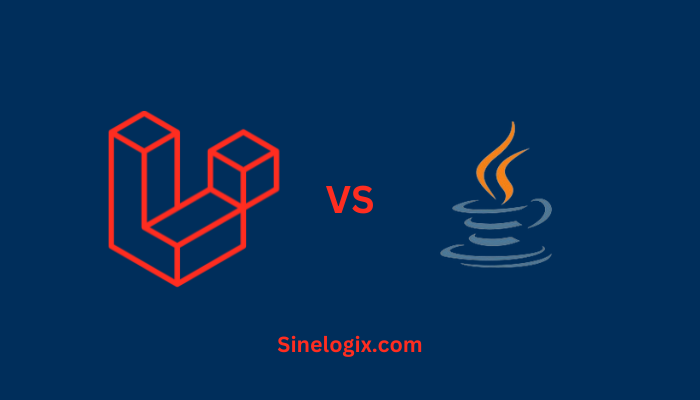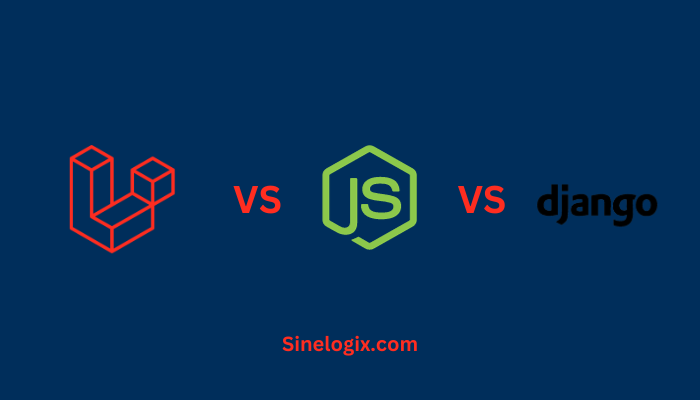Laravel, a PHP-based framework, and Java, a versatile programming language, offer distinctive approaches to web development. In this comprehensive analysis, we’ll delve into various facets of Laravel and Java, exploring their features, performance, and suitability for diverse project scenarios.
Overview of Laravel and Java
Laravel: Laravel is a PHP framework renowned for its elegant syntax and developer-friendly environment. Following the MVC architectural pattern, Laravel provides tools for routing, templating (Blade engine), and ORM (Eloquent) for efficient database interactions. Its robust ecosystem and emphasis on rapid development make Laravel a popular choice for a wide range of applications.
Java: Java is a general-purpose, object-oriented programming language known for its platform independence and scalability. Java applications are typically run on the Java Virtual Machine (JVM), enabling them to be executed on various platforms. Java’s extensive standard library and mature ecosystem make it suitable for diverse development scenarios.
Language and Ecosystem
Laravel: Built on PHP, Laravel leverages the extensive PHP ecosystem. Composer, the PHP package manager, enhances Laravel’s capabilities by providing access to a vast array of third-party libraries and tools. Laravel’s ecosystem includes the Artisan command-line tool for automating tasks, contributing to a streamlined development workflow.
Java: Java boasts a rich ecosystem and a vast standard library. The Java Development Kit (JDK) offers a comprehensive set of tools, and the Java Platform, Standard Edition (Java SE) provides a solid foundation for building various applications. Maven and Gradle are popular build tools in the Java ecosystem, facilitating project management and dependency resolution.
Architecture and Design Philosophy
Laravel: Laravel adheres to the MVC architectural pattern, emphasizing a clean separation of concerns. The framework follows an opinionated approach, providing conventions that enhance developer productivity. Laravel’s design philosophy prioritizes expressive syntax, developer happiness, and the creation of elegant and maintainable code.
Java: Java supports various architectural patterns, and its design philosophy promotes scalability, maintainability, and portability. The language’s object-oriented nature encourages modular and reusable code. Java’s commitment to the “Write Once, Run Anywhere” (WORA) principle underscores its focus on platform independence.
Learning Curve and Documentation
Laravel: Laravel is known for its developer-friendly syntax, making it accessible for PHP developers. Comprehensive documentation, guides, and tutorials facilitate the learning process. Resources like Laracasts provide video tutorials, contributing to a supportive learning environment.
Java: Java’s learning curve can vary based on the complexity of the application and the developer’s background. The official Java documentation is extensive and serves as a valuable resource for learning the language and its features. Numerous online tutorials and forums contribute to a vibrant learning community.
Community and Support
Laravel: Laravel boasts a large and active community, contributing to its growth and improvement. Forums, third-party packages, and regular updates showcase the community’s engagement. Laravel’s popularity ensures ongoing support and a wealth of resources for developers.
Java: Java has one of the largest and most established communities in the programming world. Its widespread use in enterprise applications, Android development, and various domains has created a robust support ecosystem. The Java community actively contributes to open-source projects, forums, and conferences.
Performance and Scalability
Laravel: Laravel offers good performance for PHP applications and is suitable for various project sizes. Its scalability is enhanced by features like caching, queuing, and optimized database queries. Laravel Horizon assists in managing scalable applications efficiently.
Java: Java is renowned for its performance and scalability. The JVM’s Just-In-Time (JIT) compilation and advanced garbage collection contribute to efficient resource utilization. Java applications, especially in enterprise environments, are known for their ability to handle large-scale and resource-intensive tasks.
Middleware and Request Handling
Laravel: Laravel’s middleware system provides a flexible mechanism for filtering HTTP requests. Middleware can perform tasks like authentication, logging, and modifying incoming requests, enhancing Laravel’s ability to handle various aspects of request processing.
Java: Java web applications commonly use middleware-like components known as filters or interceptors. Frameworks like Spring MVC provide robust support for interceptors, allowing developers to execute pre- and post-processing tasks during request handling. Java’s servlets also play a crucial role in request processing.
Database Integration and ORM
Laravel: Laravel’s Eloquent ORM simplifies database operations with an expressive syntax. It allows developers to interact with databases using object-oriented methods, making it easy to perform common tasks like querying and updating records. Laravel’s database migration system streamlines schema management.
Java: Java offers multiple ORM solutions, with Hibernate being one of the most widely used. Hibernate simplifies database interactions by mapping Java objects to database tables. Additionally, Java’s JDBC (Java Database Connectivity) API provides a standard interface for connecting to relational databases.
Template Engine
Laravel: Laravel employs the Blade templating engine, known for its simplicity and readability. Blade supports template inheritance and allows developers to create modular and reusable views. Laravel’s approach to templating contributes to the framework’s focus on clean and maintainable code.
Java: JavaServer Pages (JSP) and FreeMarker are popular template engines used in Java web development. These engines enable the creation of dynamic web pages by embedding Java code within HTML or using a template syntax. The choice of template engine often depends on the developer’s preferences and project requirements.
Testing and Quality Assurance
Laravel: Laravel places a strong emphasis on testing with PHPUnit, providing a robust testing environment. Developers can conduct various types of tests, including unit tests, feature tests, and integration tests seamlessly. Laravel Dusk facilitates browser automation testing, ensuring comprehensive coverage for web applications.
Java: Java supports a variety of testing frameworks, with JUnit being the standard for unit testing. Additional tools like TestNG and Mockito enhance testing capabilities. The Java ecosystem promotes a test-driven development (TDD) approach, ensuring the quality and reliability of applications.
Development Speed and Prototyping
Laravel: Laravel’s elegant syntax and built-in features contribute to rapid development. Laravel Spark, a package for SaaS application scaffolding, accelerates the creation of subscription-based web applications. The framework’s focus on developer-friendly syntax aids in quick prototyping, making it ideal for startups and projects with tight deadlines.
Java: Java’s development speed can be influenced by factors such as project complexity and the development environment. The language’s static typing and verbosity may lead to more code compared to dynamically-typed languages. However, frameworks like Spring Boot streamline Java development and support rapid prototyping.
Mobile App Development
Laravel: While primarily a backend framework, Laravel can serve as the backend for mobile applications. Laravel Nova or API resources can be used to expose backend functionality for mobile app integration. Laravel’s API-centric approach facilitates the development of robust and secure APIs.
Java: Java is a prominent language for Android app development, using the Android SDK and frameworks like Android Studio. Java’s object-oriented nature and platform independence contribute to the creation of scalable and feature-rich mobile applications. It’s important to note that Java can also be used for backend services in mobile app architectures.
Community Trends and Adoption
Laravel: The Laravel community is dynamic, and the framework continues to evolve with frequent updates and new features. Laravel Vapor, a serverless deployment platform, reflects the community’s commitment to embracing modern cloud-native technologies. This adaptability ensures that Laravel remains relevant in the ever-changing landscape of web development.
Java: Java’s adoption remains strong across various industries, especially in enterprise settings. The language’s longevity, stability, and continuous updates contribute to its sustained popularity. Java frameworks like Spring Boot and Jakarta EE showcase the community’s dedication to modernizing Java for contemporary development needs.
Server Resource Utilization
Laravel: As an interpreted PHP framework, Laravel may require more server resources compared to frameworks written in lower-level languages. However, the ease of use, extensive feature set, and developer-friendly environment can justify the resource overhead in many scenarios.
Java: Java applications can be resource-intensive, especially during startup, as the JVM performs Just-In-Time compilation. Once running, Java applications demonstrate efficient resource utilization, making them suitable for long-running processes and applications with substantial resource demands.
Ecosystem and Third-Party Integrations
Laravel: Laravel’s ecosystem is rich and diverse, with a wide array of third-party packages available through Composer. Laravel Forge simplifies server provisioning and deployment, while tools like Laravel Mix streamline asset compilation. The availability of packages and integrations enhances the development workflow and supports a variety of use cases.
Java: Java’s ecosystem is vast, with numerous libraries and frameworks catering to various needs. Maven and Gradle facilitate dependency management and project configuration. Java applications can integrate with enterprise-level tools, databases, and middleware, thanks to the language’s long-standing presence in the software development landscape.
Containerization and Microservices
Laravel: Laravel applications can be containerized using tools like Docker, allowing for seamless deployment and scalability. Laravel’s modular structure and support for microservices architectures make it suitable for building distributed systems. Laravel Horizon aids in managing scalable Laravel applications efficiently.
Java: Java, with its strong support for modular development and containerization, is well-suited for microservices architectures. Frameworks like Spring Boot simplify the creation of microservices, and tools like Docker and Kubernetes enable efficient containerization and orchestration. Java’s adaptability aligns with modern trends in scalable and distributed systems.
Internationalization and Localization
Laravel: Laravel provides robust support for internationalization and localization. Developers can easily manage language files, translate content, and adapt the application to different locales. Laravel’s localization capabilities contribute to building globally accessible web applications, a crucial aspect for projects targeting diverse audiences.
Java: Java offers comprehensive support for internationalization through the Java Internationalization (I18N) and Localization (L10N) APIs. Developers can leverage these APIs to create multilingual applications by managing resource bundles and adapting content based on user locales. Java’s internationalization features align with the demands of globalized software.
User Authentication and Authorization
Laravel: Laravel simplifies user authentication and authorization through the built-in Laravel Passport and Laravel Sanctum packages. These packages provide convenient solutions for API authentication and token management. Laravel’s focus on security features ensures a robust foundation for implementing user authentication and access control.
Java: Java applications commonly use frameworks like Spring Security for handling user authentication and authorization. Spring Security provides a comprehensive set of features for securing Java applications, including support for various authentication mechanisms and authorization strategies. Java’s security-oriented frameworks contribute to building secure applications.
SEO-Friendly Routing and URLs
Laravel: Laravel’s routing system allows developers to create clean, SEO-friendly URLs. The framework’s expressive routing syntax and the ability to define named routes contribute to building URLs that are both human-readable and optimized for search engines. Laravel’s approach to routing enhances the overall SEO performance of applications.
Java: Java web applications can implement SEO-friendly routing using frameworks like Spring MVC. The design of RESTful APIs in Java applications also supports clean and readable URLs. Additionally, Java’s support for server-side rendering (SSR) contributes to SEO optimization in frontend applications.
Related Articles:
Conclusion
Choosing between Laravel and Java depends on various factors, including project requirements, team expertise, and development preferences. Laravel’s elegance, rapid development capabilities, and PHP ecosystem make it well-suited for a range of applications, particularly those favoring quick prototyping and frontend rendering.
Java, with its platform independence, scalability, and extensive ecosystem, is a robust choice for enterprise-level applications and projects where performance and long-term maintainability are critical. Both Laravel and Java contribute significantly to the diverse landscape of web development, catering to the evolving needs of developers and businesses across different domains and industries.




